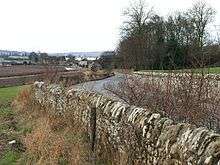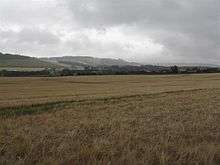Cupar Muir
Cupar Muir is a small settlement consisting of a few roads and around 35 houses. It is situated beside the town of Cupar in Fife.

Scottish Reformation
John Knox and Robert Lindsay of Pitscottie described a confrontation during the Scottish Reformation at Cupar Muir in June 1559. The Protestant Lords of the Congregation opposed the French troops of Mary of Guise commanded by Henri Cleutin and a Scottish force led by James Hamilton, Duke of Châtellerault. Following the Reformation riots at Perth, the French troops were marching towards St. Andrews from Falkland. On 13 June a Protestant force of 3,000 assembled at Cupar Muir to prevent the French reaching Cupar.

The Protestants were led by the half-brother of Mary, Queen of Scots, Lord James, Lord Ruthven, the Earl of Rothes, the Lothian lairds of Ormiston, Calder, Haltoun, Restalrig, and Colstoun, with men from Dundee, St. Andrews and Cupar. Knox wrote it seemed as if "men had rained from the clouds." Master James Halyburton, Provost of Dundee, chose their position on the Muir to give the best advantage with their guns.
The French advanced within a mile, keeping the River Eden between them and the Protestant force. Cleutin and the Duke rode to Hill of Tarvit. John, Lord Lindsay, (or Patrick, Master of Lindsay), and Patrick Hepburn of Wauchton came from the Duke or the Regent to treat with the Protestants. A truce of eight days was made and signed by Lord James and Cleutin[1] at "Garlabank", now Garlie Bank, on the flank of the hill by the river.[2] Robert Lindsay supplies dialogue for the negotiation, giving Lord Lindsay a lengthy and persuasive speech to the French commanders Cleutin, De la Chapel, and Sarlabous that brokered the peace;
"Ye are strangers, lose not the hearts of Scottish-men, neither procure the nobility of Scotland to turn enemies to the King of France, who are now his friends, ... Likewise it is an old Scottish proverb; I will suffer my friend to need, but I cannot see him bleed."[3]
References
- Knox, John, Works: History of the Reformation, vol.1 (1846), pp. 350-355 & footnotes (Cleutin's signature in Knox's manuscript was not clearly legible)
- "Fife Place-name Data :: Garlie Bank". fife-placenames.glasgow.ac.uk.
- Pitscottie, History of Scotland, Freebairn (1778), pp. 318-323